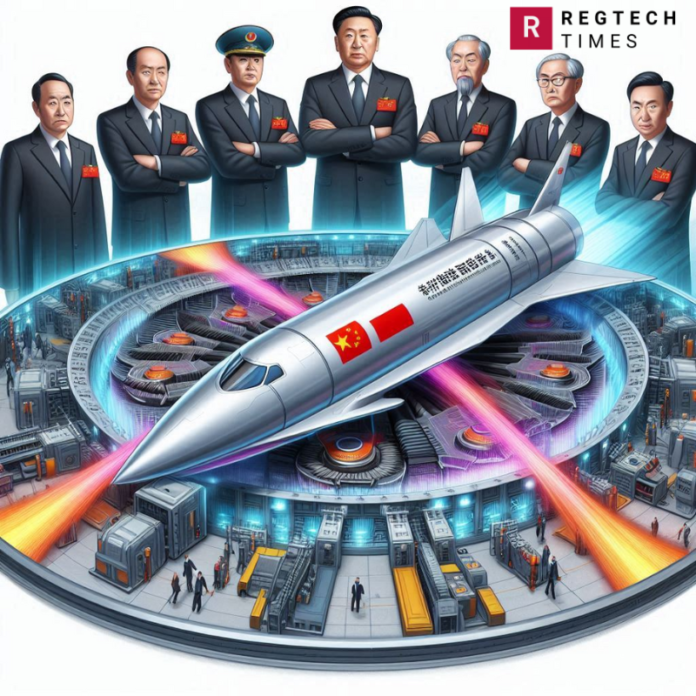Hypersonic technology involves developing and using vehicles or weapons that can travel at speeds greater than Mach 5, which is five times the speed of sound. China was seen as the copy master in the last decade but that is not the case anymore.
China is no longer content with being perceived as merely an imitator in technological advancements. The country has made significant strides in the development of hypersonic weapons, posing a growing threat to U.S. national security and military preparedness. The rapid advancement and deployment of these weapons could serve as a stark warning to the United States, urging it to reevaluate its defense strategies and technological priorities.
Leading in Hypersonic Technology
China’s progress in hypersonic technology is impressive. The nation has constructed the world’s largest and most sophisticated hypersonic wind tunnel, capable of simulating conditions at speeds up to Mach 30. This state-of-the-art infrastructure enables China to develop and test advanced hypersonic prototypes more efficiently than the United States. In 2021, China demonstrated its capabilities with a hypersonic glide vehicle test that caught U.S. intelligence off guard. This weapon circled the Earth before striking near its target in the Gobi Desert, showcasing China’s ability to create practical applications for hypersonic technology.
1st Space Espionage Scandal Rocks China, Ministry Issues Veiled Warning to US
Destabilizing U.S. Deterrence Strategies
Hypersonic weapons, which can travel up to five times the speed of sound, are incredibly maneuverable. This makes them difficult to track and intercept, posing a significant challenge to existing U.S. defense systems. As China enhances its hypersonic arsenal, the U.S. faces mounting difficulties in keeping pace. The advancement of these weapons by China threatens to destabilize U.S. deterrence strategies, raising serious concerns about national security.
The primary concern is that hypersonic weapons can bypass current missile defense systems. The maneuverability and speed of these weapons mean they can take unconventional routes to their targets, such as approaching from the southern hemisphere. Most U.S. missile defense systems are designed to intercept threats coming from the northern hemisphere, leaving a significant vulnerability that China could exploit. This capability undermines U.S. defense strategies and highlights the urgent need for the U.S. to accelerate its development of hypersonic weapons and countermeasures.
Strategic Implications
China’s advancements in hypersonic technology signify a strategic shift in global military power. The development and deployment of these weapons by China could directly threaten the American homeland. Hypersonic weapons have the potential to render existing U.S. missile defense systems ineffective, exposing critical infrastructure and military assets to unprecedented risks.
The strategic implications of China’s hypersonic advancements are profound. By developing weapons that can outmaneuver and outrun current U.S. defenses, China gains a significant advantage in any potential conflict. This advantage is not merely theoretical; it has practical consequences for U.S. military planning and preparedness. The ability to deploy hypersonic weapons effectively could embolden China in its geopolitical ambitions, particularly in areas like the South China Sea and Taiwan.
Production and Deployment Capabilities
China’s ability to mass-produce hypersonic weapons efficiently compounds the threat. The combination of advanced technology and superior production capabilities means that China can quickly field a significant number of these weapons, potentially outpacing the U.S. in both quality and quantity. This mass production capability is a critical factor that enhances China’s strategic position.
Implied Warning to China; US Deploys F-22 Raptors in South Korea Amid Geopolitical Tensions
The rapid deployment of hypersonic weapons could provide China with a first-strike advantage in any conflict. The sheer speed and maneuverability of these weapons make them ideal for surprise attacks, which could cripple U.S. forces before they have a chance to respond. This possibility underscores the need for the U.S. to not only develop its own hypersonic capabilities but also to improve its detection and interception systems to counter this emerging threat.
Challenges for the U.S.
The United States faces considerable hurdles in responding to China’s hypersonic advancements. Despite ongoing efforts, the U.S. has struggled to test and develop its own hypersonic weapons. The current strain on America’s defense industrial base exacerbates these difficulties, making it challenging to keep up with China’s rapid progress. Furthermore, the U.S. lacks adequate countermeasures to defend against hypersonic attacks, leaving critical vulnerabilities in its defense systems.
China Warns: The Deadly DF-26B Threatening U.S. Naval Power in the Pacific
One of the significant challenges for the U.S. is the integration of hypersonic technology into its existing military framework. Developing hypersonic weapons is one aspect; deploying them effectively within a coherent defense strategy is another. This requires substantial investment in research and development, as well as a reevaluation of current military doctrines. The U.S. must also consider the geopolitical implications of deploying hypersonic weapons, as it could trigger an arms race with other global powers.
China’s advancements in hypersonic weapons mark a significant shift in global military dynamics, challenging U.S. supremacy and raising serious concerns about national security.
The rise of China as a leader in hypersonic technology is not just a technological challenge for the U.S.; it is a strategic one. It calls for a comprehensive response that includes accelerating the development of hypersonic weapons, improving defense systems, and fostering international cooperation to address the destabilizing effects of these advancements.



